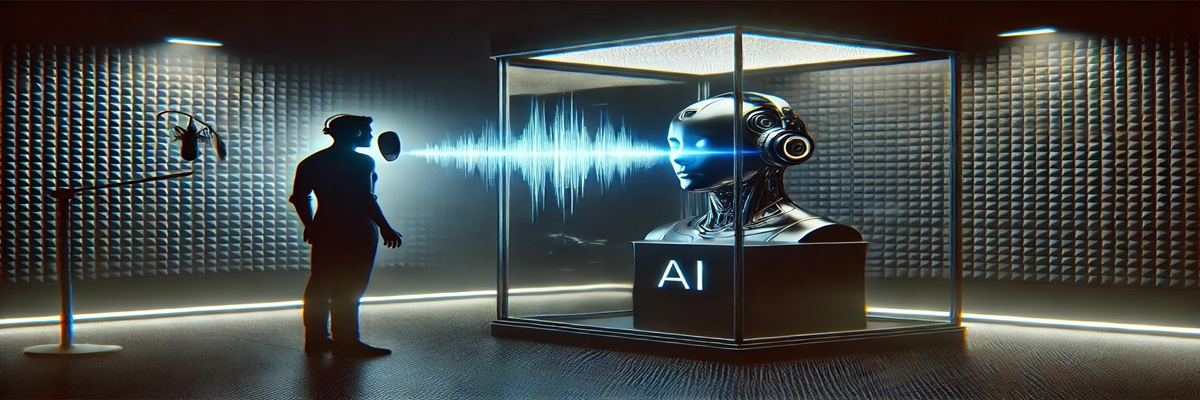The use of artificial intelligence in voiceover work has once again ignited controversy, this time in one of the world’s most high-profile gaming franchises. Epic Games’ decision to use an AI-generated version of Darth Vader’s voice in *Fortnite* has prompted an official unfair labor practice charge filed by a major voice actor union. The case has become a flashpoint in the escalating debate over AI’s role in entertainment, pitting technological innovation against labor rights, consent, and the value of human performance.
The Incident: AI Used to Recreate Darth Vader’s Voice
The controversy began when players noticed that Darth Vader, featured in *Fortnite*’s latest crossover event, was speaking using a voice that sounded identical to the late James Earl Jones—who famously portrayed the character in *Star Wars* for decades. However, no official casting announcement had been made, and fans quickly began speculating that the voice was AI-generated.
It was soon confirmed that the voice was not performed by a human actor but generated through synthetic voice technology trained on archival performances. While Epic Games has not publicly commented in detail, industry insiders have reported that the company used licensed AI voice modeling to generate Vader’s lines in-game, without hiring a live performer or publicly crediting the technology’s use.
This decision triggered immediate concern within the voice acting community, especially because it involved a character as iconic—and as closely associated with a single performer—as Darth Vader.
The Union Response: Filing an Unfair Labor Practice Charge
In response, a major voice actor union—believed to be SAG-AFTRA—filed an official unfair labor practice charge with the National Labor Relations Board. The complaint alleges that Epic Games circumvented standard industry labor agreements by using AI-generated voice work instead of hiring union talent, and did so without proper disclosure or negotiation.
At the heart of the complaint is the claim that this action violates protections for union performers, setting a dangerous precedent for how companies may choose to bypass talent and agreements in the future. According to the filing, this is not only a threat to working actors, but also a direct violation of collective bargaining rights.
“This isn’t just about one performance,” said a union representative in a prepared statement. “It’s about ensuring that performers have a say in how their voices and likenesses are used—and that companies can’t replace them with synthetic versions without consent.”
Darth Vader and the Symbolic Weight of AI Replication
The choice of Darth Vader for this kind of AI application is particularly significant. James Earl Jones’s voice is one of the most iconic in film history—deep, resonant, and inseparable from the character. While Jones previously gave Lucasfilm permission to digitally recreate his voice for future projects (such as in *Obi-Wan Kenobi*), the *Fortnite* use appears to fall outside that previously reported agreement.
What makes this instance more contentious is that it may not have involved Lucasfilm directly, nor did it credit any live talent. Instead, the recreation was used in a commercial gaming environment where millions of players would hear the AI-generated voice without realizing it was not a human performance.
Many voice actors see this not just as a one-off event, but as the latest in a trend where studios and publishers seek to minimize labor costs by leveraging AI, even for legacy characters who were built by human talent over decades.
Ethical and Creative Questions
The backlash to *Fortnite*’s AI Darth Vader isn’t just legal—it’s cultural. The use of AI-generated voices for recognizable characters raises difficult questions about artistic authorship, consent, and compensation. If an AI can mimic a performer’s voice closely enough to fool audiences, should that performer—or their estate—be compensated? Should they be asked for permission?
Critics argue that even when companies have legal clearance, ethical questions remain. Many performers have expressed discomfort with the idea of their voices being cloned without control over how or where those voices are used.
There are also creative considerations. While AI-generated voices can approximate tone and delivery, they still lack the subtle emotional texture of a trained actor. As voice director and performer Jennifer Hale once said, “Good voice acting isn’t about sound—it’s about soul.” AI, even at its most advanced, struggles to replicate the lived experience behind a voice performance.
The Larger Industry Context
This is far from the first time AI voice work has sparked concern in the entertainment world. In recent years:
* SAG-AFTRA has negotiated contract language to protect against AI replication without consent.
* High-profile voice actors have voiced opposition to AI recreations, including those used in video games, trailers, and advertising.
* Several companies have begun advertising “voice cloning” services that allow clients to mimic any voice with minimal training data—often without transparent protections for the original performer.
The *Fortnite* situation represents one of the most public—and potentially precedent-setting—examples of these tensions. Because of the game’s massive player base and the character’s visibility, the case is expected to draw significant attention from unions, studios, and players alike.
Fan Reaction and Industry Implications
Among fans, reactions have ranged from fascination to frustration. Some players are impressed by how convincingly the AI replicates Darth Vader’s voice, seeing it as a technical achievement. Others view the decision as a step too far—especially given the legacy of James Earl Jones and the importance of honoring original performances.
In the voiceover community, the sentiment is more unified. Many see this as a warning sign that even well-known characters, tied to respected performers, can now be recreated without real actors in the room.
“If they can do this with Darth Vader, what’s to stop them from doing it with everyone else?” one voice actor wrote on social media.
The fear is that as the technology improves, companies may rely less on live talent and more on AI to populate characters across games, animations, and other media. Without strong legal and contractual safeguards, this could reduce job opportunities and destabilize the field for working actors.
What Comes Next
The unfair labor charge filed by the voice actor union could lead to an investigation by the National Labor Relations Board. If found valid, the case could set new guidelines—or even legal precedents—for how AI-generated performances are handled in unionized work environments.
More broadly, this moment could accelerate the push for stronger protections in labor contracts, clearer consent requirements for voice cloning, and greater transparency in how AI is used in entertainment. Some industry observers believe this may eventually lead to a standardized “voice rights” framework, much like how likeness and image rights are treated for on-screen actors.
Companies that fail to disclose AI-generated voice use—or that bypass performers entirely—may soon face both legal and public relations consequences.
A Flashpoint for Voiceover and AI
The *Fortnite* Darth Vader situation represents a crossroads for the voiceover industry. It shows both the potential of AI and its risks. For performers, unions, and fans, the core issue is not the technology itself—it’s how it’s used, and whether human creativity and labor are respected in the process.
As one of the most recognizable voices in media history, Darth Vader now becomes a symbol of something far larger: the urgent need to define how AI fits into the future of performance.

